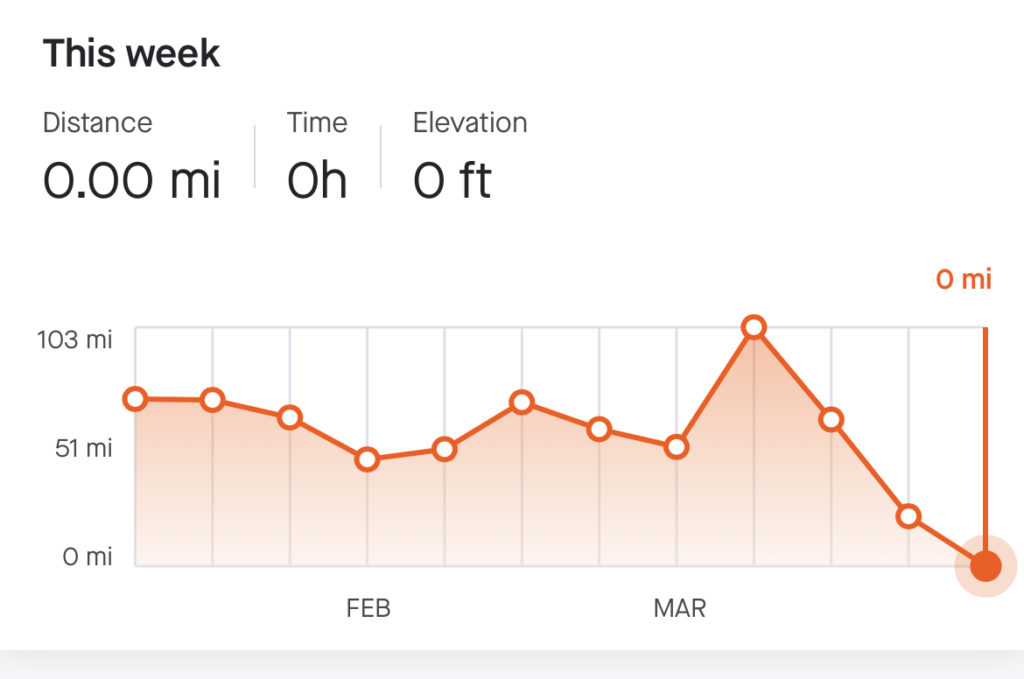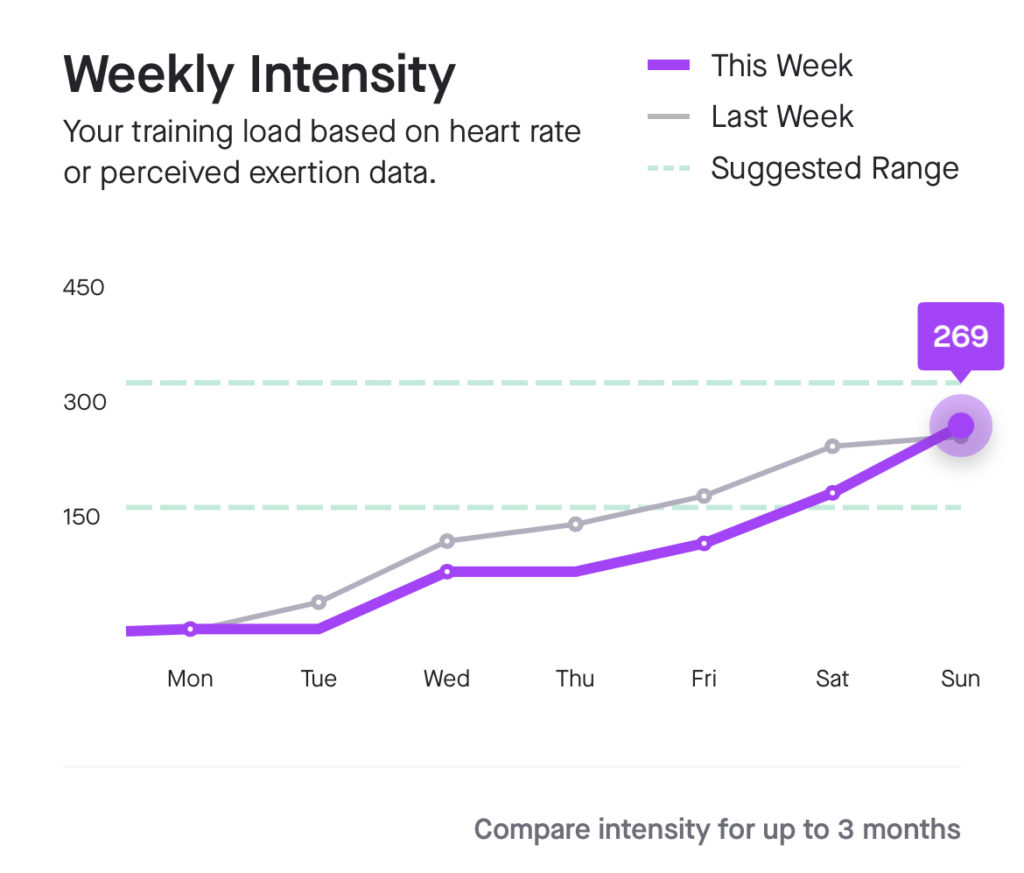For multi sport training, especially triathlon training, logging time in a discipline is important. Even for just a single sport, like running, having time spent at a low level of intensity can greatly improve too end performance. For some training plans workouts are dictated in time, not distance or pace, as a way to ensure that this work gets in and to make it easier to translate a workout across different abilities, terrain, or other factors. Since plans are built in time spent it’s important to track training hours.
In the Strava training log activities can be sorted by time. Weekly totals are displayed for each discipline as well as total. This can include total time on feet or in the saddle, but can also add other workouts that add to total training time.
When Does a Strava Week Start?
For weekly totals Strava weeks start on Monday and go through the following Sunday. This mean aggregates always show up for a Monday-Sunday week. This is also when a Strava training plan will start. Many users find this bothersome because they think of their weeks as Sunday-Saturday, Strava seems to adhere to ISO week standards though which tries to standardize these types of things.
Meditation, yoga, stretching, weight training, skiing, swimming all can be tracked. Setting an aggregate weekly goal is helpful, and it’s good for comparing to some popular training plan targets.

If you are looking at the individual week Stress Scores, or weekly goals, all of it will tie back tot he Mon-Sun week. There is no individual over ride, although that would be nice, to make your personal week custom to Wed-Tues or anything else. Garmin and others allow you to alter the day to start your week on, Strava likely limits this due to the need to standardize different comparisons on leaderboards and challenges.
Strava Weekly Intensity
Weekly intensity of your workouts also ladders to the same Mon-Sun week. This is a collection of relative effort from each individual workout. The suggested range is based on prior weeks training load and is designed to avoid too fast of a ramp up, which would cause injury. Too little work and you can loose fitness gains.

Weekly intensity is an imperfect metric and based on a combination of power output or heart rate during the workout efforts. Other training tools use similar things, for example Training Peaks uses the TSS score and a version of Form, Fatigue, and Fitness.
How Long Should You Be Training for a Triathlon
The Olympic distance triathlon plans recommended all included a total weekly time summary. They varied from 4-5 hours a week for beginners up to 15+ hours a week for too end competitors. Somewhere in the middle is where most people tend to settle, in order to balance training times with rest and avoiding injury or over training.
The base building phase shown above, with 4-6 hours spent per week training, is the lead in too a total 2 week plan that calls for 10-11 hours of training. Most of this time is spent at a moderate pace, to but cardiovascular function. Some high intensity work mixed in for 15%-25% of the training volume helps build speed. Heart rate training can be effective, with the goal of keeping things in the lower heart rate zones.
Overall the basic concept of time based training is that more is better, so long as the intensity is low enough. Of course there’s is a limit to that, so how much time training is too much? Like everything, that depends. It is also often linked to how much time there is to recover. Getting to 15 hours of training while working full time and cutting into sleep or time stretching, icing, and eating right isn’t going to be good.
When during the day a training session happens can also impact how long it should be. Especially important is when a workout is compared to when a meal is. A long hard tempo run or bike effort feels different when running fasted vs running just after a heavy meal. Similarly, weight training hours away from any meal (or protein intake) will take away some of the benefits of the workout.
No amount of tracking totals on Strava or any other app will tell you how balanced the workouts are. Some fitness trackers, like Whoop and their score, or Strava and their freshness score do try to provide some reading of how ready the body is for a hard day. Still this is typically on a day to day basis and doesn’t include any concept of diet. That said, on a day where your resting heart rate is already up and previous training sessions have felt harder than typical, may not be the day to try to get in two hours of training.